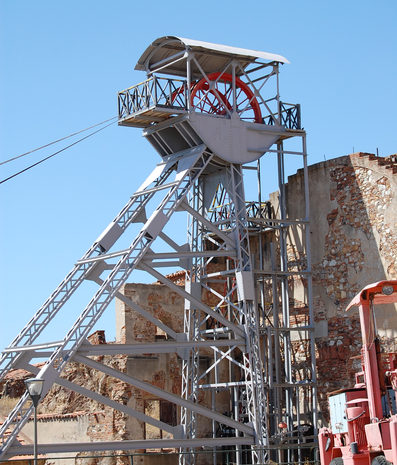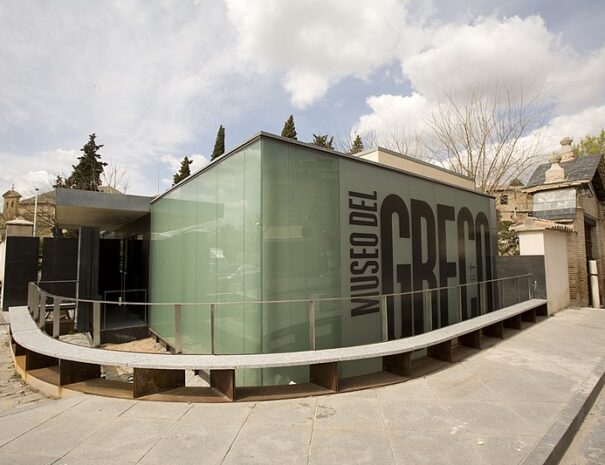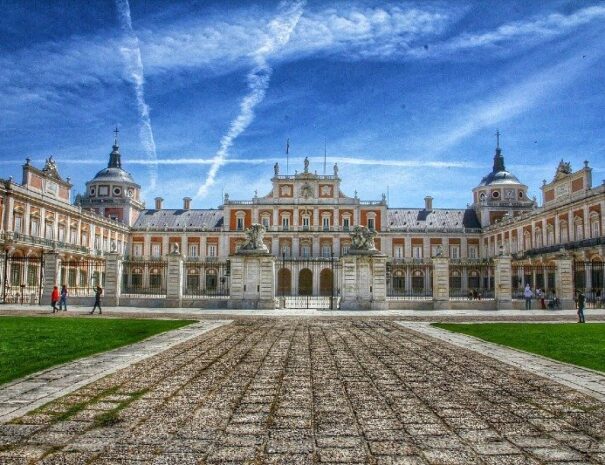
Almaden Mines
Check out our guide to the Almaden Mines one of the largest mercury deposits in the world and have been in operation ever since Roman times. … Read More
The old cathedral was totally destroyed in the revolt of the Comuneros. Charles V ordered a new cathedral with a different ground plan to be built on a higher site. Building of the late Gothic cathedral began in 1525. It is known as the “Lady of the Spanish cathedrals‘ owing to its elegance, slender lines, and restrained austerity. The ground plan was drawn up by Juan Gil de Hontañón, who was simultaneously building Salamanca Cathedral. After his death García de Cubillas took
over, and after the latter’s death Rodrigo Gil de Hontañón, son of the original architect, carried on the work in Gothic style.
The two bell towers and the high dome are a distinctive feature of the complex. Altogether it comprises 16 courtyards, 12 cloisters, 86 staircases, over 2,000 windows, 88 fountains, and 13 chapels and oratories!
The cathedral of Segovia, with a nave and two aisles, was consecrated in 1768. The tower of this cathedral is the highest in Spain at its original height of 352 ft., was struck by lightning and had to be reduced to its current height of 295 feet. The dome over the crossing rises to a Height of 225 ft. and is one of the most beautiful in Spain´s Cathedrals . The dome and tower were completed by Juan de Mugaguren in 1615 and 1620 respectively. With its beautiful windows, pinnacles and carvings, battlements, embrasures, flying buttresses and buttresses, the cathedral is a wonderful sight.
The portal of San Frutos, on the Northern side, was built in Hererra style (the same style used for the construction of the Monastery of El Escorial near Madrid) by Pedro de Brizuela and has Doric columns and a classical frieze. The nave is 352 ft. long and 168 ft. wide, with beautiful, sturdy pillars which support the web of the vaulting some 110 ft. 6 in. up. The ambulatory has seven polygonal chapels. Above the arches of the nave, aisles and chapels are galleries with finely carved stone balustrades and these run the whole way around the building.
The stained glass of the numerous great windows depicts Biblical scenes. The artists concerned include Pierre de Chiberry (1540), Francisco Herranz and Juan Danis (1680). The Capilla Mayor (main chapel), built by Diego Casado, Pedro Bustillo and Juan Garcia in 1614, has an apse, a balustraded gallery, large window and cornice. The chapel is groin vaulted with Doric pillars.
The marble and bronze altarpiece, a gift from Charles III, is by Sabatini; it is decorated with large wooden sculptures of saints and an ivory and silver statue of the Virgen de la Paz.
The chapel is enclosed by three large 18C grilles. The cathedral’s other chapels also
contain a vast wealth of fine painting and sculpture. The Capilla del Santo Entierro
has an impressive altarpiece by Juan de Juni (Entombment 1571) as well as a triptych by Ambrosio Benson from the early 16C and a painting by Sánchez Coello; the Gothic grille came from the old cathedral.
The square ante-room of the Capilla del Sagrario, which is Plateresque and has three doors and groin vaulting, is by Rodrigo Gil de Hontañón (1562). The room serves as a sacristy and contains the Cross of the Lozoyas by Manuel Pereira (16C). The Capilla del Sagrario by José de Churriguera contains a ceramic altar with a Dying Christ by Daniel Zuloaga. The chapel of Cristo Yacente contains a recumbent Christ by Gregorio Fernández, a painting of the Descent from the Cross by Francisco Camino and a Plateresque grille.
The chapel of San Blas has a 16C grille and a 17C altarpiece. The chapel of Santiago has a marvellous grille by Juan de Salamanca (1596) and perhaps the finest altarpiece in the cathedral, made by Pedro de Bolduque 1580-91. In the chapel of Santa Barbara there is a 17C grille and a Gothic font with the arms of Henry IV from the old cathedral.
The Capilla de Nuestra Señora del Rosario has a painting by Bayeu (1789) and interesting frescos.
The chapel of San José contains an 18C altarpiece. In the chapel of San Anton is a grille (1755), a baroque altarpiece and the tomb of the bishop who founded the cathedral.
The chapel of San Pedro has a 16C the outer portal to the cloister, designed by Juan Guas in the 15C. The coro, in the middle of the nave, is Gothic and it too is from the old cathedral. The choir stalls are by Martin Sánchez and the bishop’s throne by the Madrid silversmiths González and Vergara (1658). The Plateresque choir stalls by Vasco de la Zarzas, the coloured marble lectern is 17C and the baroque grilles are by Elora (1724) and others
The retrochoir was designed by Ventura Rodriguez (1784) in neoclassical style and has a marble and bronze altarpiece with sculptures by the Frenchmen Dumandré and Thierry, which was originally intended for the chapel of one of the the royal palaces, the one in Riofrio (20 minutes drive from the city of Segovia)
The cloister, part of the old cathedral, was restored by José Campero in 1524 and rebuilt on a new site. It is almost square and the walks are groin vaulted. The chapter- house and other rooms nearby house the interesting cathedral museum. The chapterhouse itself is a room of harmonious beauty and has a collection of tapestries; the panelling also is fine.
The museum contains paintings by Pedro Berruguete, Alonso Cano, Morales, Van Eyck, a reliquary by Benvenuto Cellini, a 13C figure of the Madonna with the Infant Christ on her knee and the tomb of the Infante Don Pedro, Henry II’ son. The museum also has a collection of incunabula from the second half of the 15C, which is one of the most valuable in Spain. Next to the chapterhouse are two paintings by Valdés Leal and Esquivel.
The visit of the cathedral can be done in approximately an hour.

Check out our guide to the Almaden Mines one of the largest mercury deposits in the world and have been in operation ever since Roman times. … Read More

Check out our guide to the El Greco Museum in Toledo. El Greco is the cities most famous painter and this is the perfect place to experience his art.. … Read More

Check out our complete visitors guide to the Royal Palace of Aranjuez and it lush gardens. This spectacular estate is just a short drive from Madrid. … Read More

Check out our guide to the Salamanca Cathedrals. It is one of the most emblematic buildings in the city and it is actually two buildings in one. … Read More
is proudly powered by WordPress